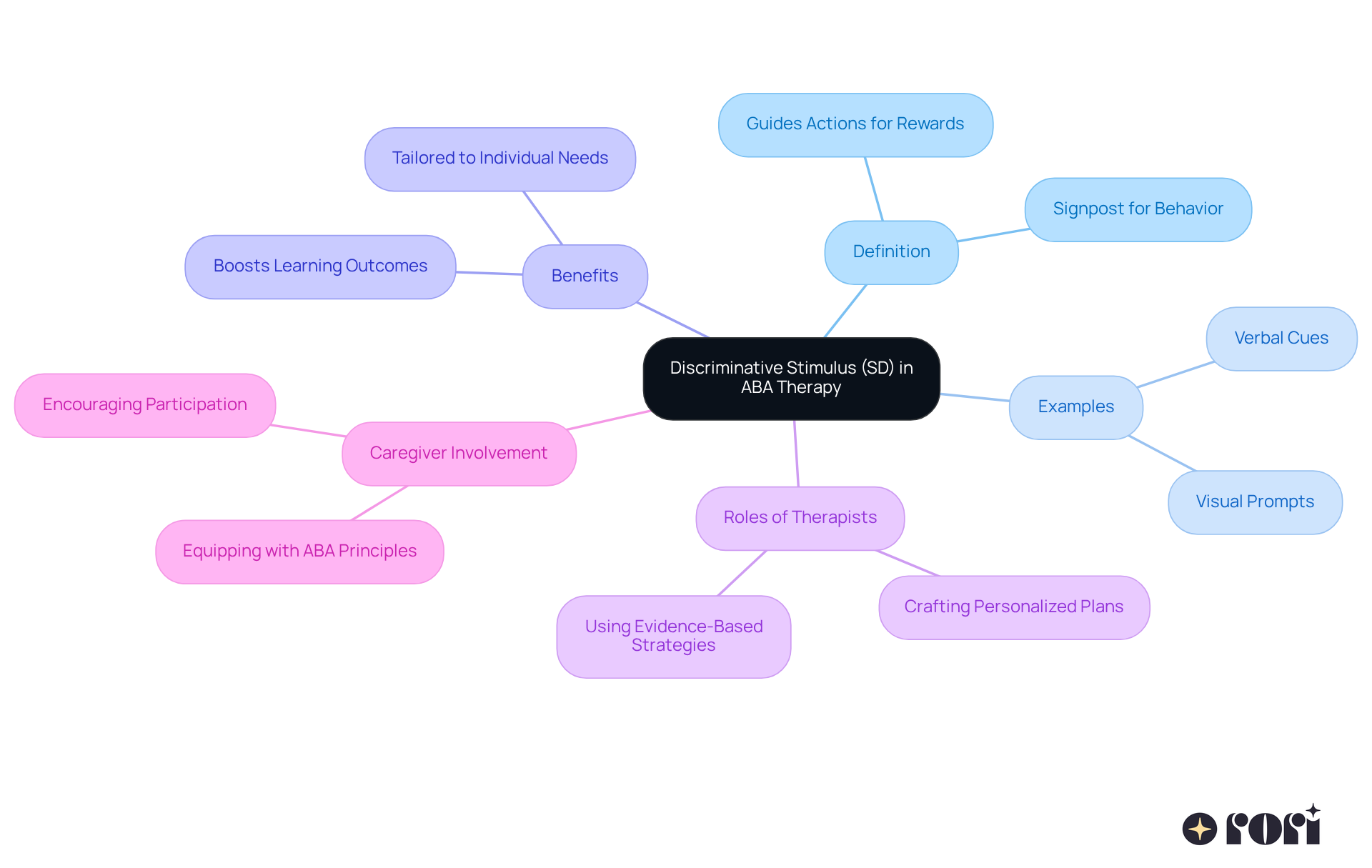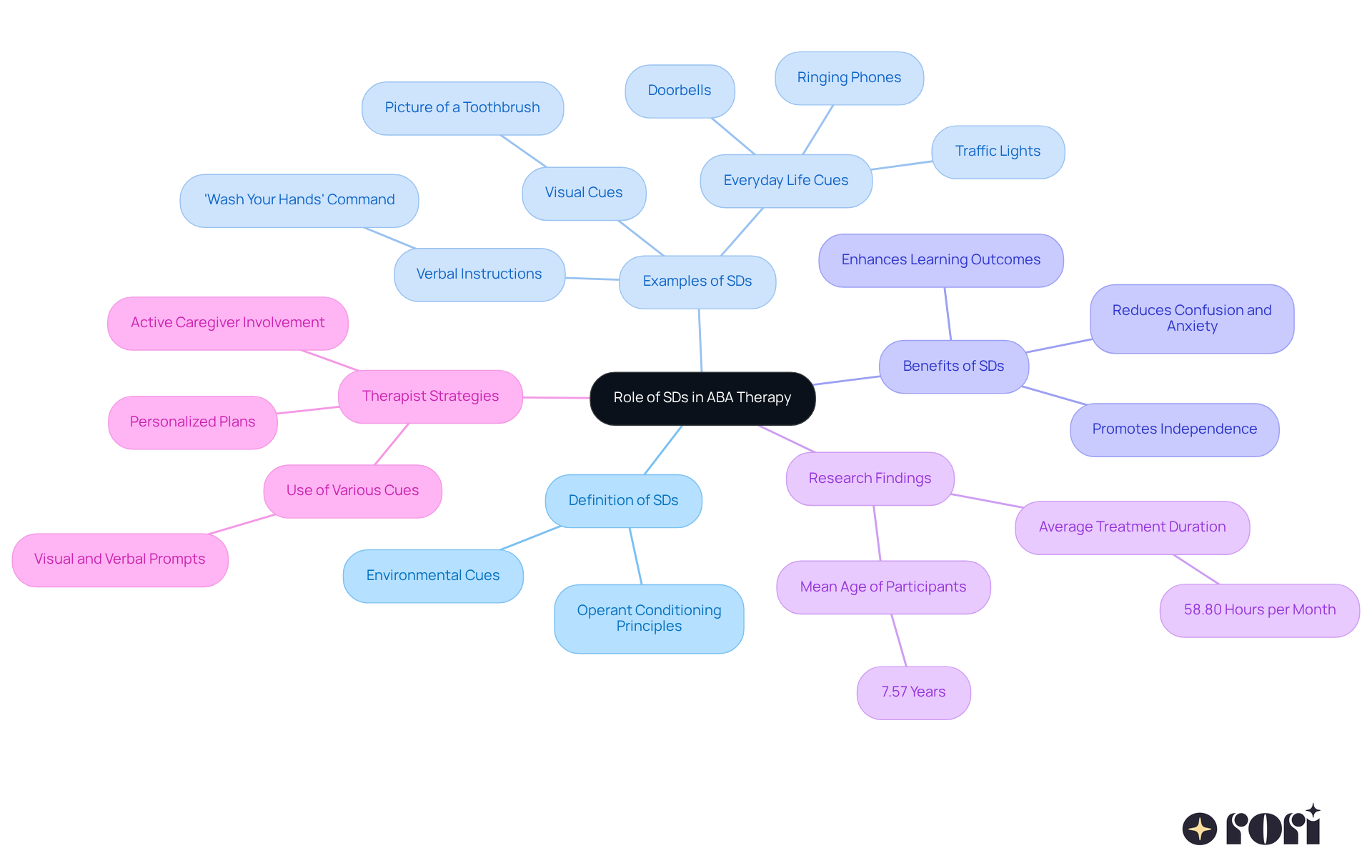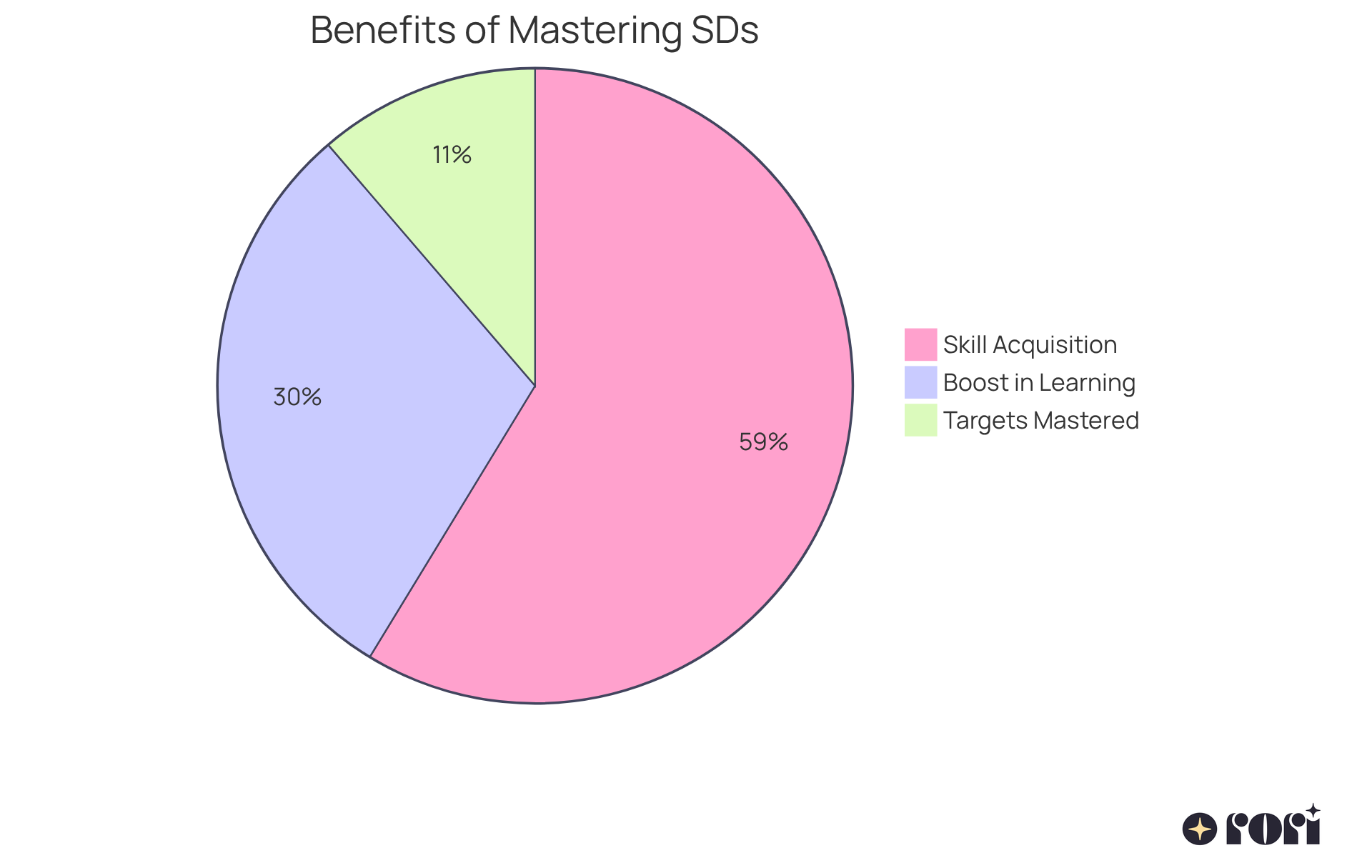In the world of ABA therapy, 'SD' stands for Discriminative Stimuli. These are the cues that help signal when a specific behavior will lead to reinforcement. Think of them as little guides that can steer children’s actions and support their skill development.
It's crucial to use SDs consistently and tailor them to each child's unique needs. Research shows that when done effectively, this approach can really boost learning outcomes and help foster independence in children with autism.
Let’s explore this together! By understanding how SDs work, you can create a positive learning environment for your child. Remember, every child is different, and finding the right cues can make all the difference. We're here to help you every step of the way!
Understanding the nuances of Discriminative Stimuli (SDs) in Applied Behavior Analysis (ABA) is crucial for helping children, especially those with autism, thrive. By recognizing how these cues signal expected behaviors and lead to positive reinforcement, caregivers and therapists can create structured environments that really boost learning outcomes. But here’s the question: how can we tailor these strategies to meet the unique needs of each child? Let’s explore this together!
Delving into this question opens up a world of possibilities. The transformative potential of SDs can guide behavior change and promote independence in everyday life. Imagine the difference it can make when children feel empowered to navigate their surroundings confidently! We’re here to help you every step of the way!
In Applied Behavior Analysis (ABA), sd in aba means that a Discriminative Stimulus (SD) acts like a helpful signpost in our environment. It tells us when a specific action will lead to a reward. For instance, when a therapist says, 'please sit down,' that simple request serves as an SD, suggesting that following this direction will bring about positive reinforcement—like praise or getting to do something fun afterward. This is crucial in ABA therapy, as sd in aba means setting clear expectations and guiding behavior change.
Recent research shows that using SDs consistently can really boost learning outcomes. It helps young learners apply their skills in different situations, which is so important! Experts also stress the need to tailor these cues to each child’s unique needs, making sure they truly support their learning journey. Picture this: using a visual prompt, like a picture of a toothbrush, can encourage kids to brush their teeth. It’s a simple yet effective way to teach essential life skills.
By understanding and applying what SD in ABA means, therapists can create organized environments that promote positive behavior changes and foster independence, especially for children with autism. Plus, it’s vital to keep evaluating and tweaking these cues over time to ensure they remain effective. When we integrate personalized planning with measurable goals, we can address each child's strengths and challenges more effectively.
Certified analysts play a key role in crafting these personalized plans, using evidence-based strategies to enhance intervention effectiveness. And let’s not forget about caregivers! Equipping them with ABA principles and strategies not only encourages their involvement in their child’s treatment but also leads to better behavioral outcomes and improved family dynamics. So, let’s explore this together—your journey in supporting your child is important, and we’re here to help you every step of the way!

In ABA therapy, SD in ABA means that discriminative stimuli (SDs) play a crucial role in guiding behavior change. They provide clear and consistent signals that help young ones understand what’s expected of them. For example, when a child hears the command 'wash your hands,' it signals that doing so will likely lead to some form of reinforcement, like praise or a small reward. This structured approach not only helps in teaching new skills but also reduces confusion and anxiety, enabling children to navigate their world more effectively.
By using SDs effectively, therapists create a predictable learning environment that promotes independence and builds confidence. Research shows that the systematic application of what SD in ABA means can enhance learning outcomes, as children learn to link specific cues with positive reinforcement, increasing the chances of desired behaviors. This method has proven effective in various situations, whether it’s encouraging kids to adopt self-care routines or participate in social interactions, ultimately supporting their overall development.
Did you know the average treatment duration for participants in ABA therapy is about 58.80 hours per month? This highlights how structured and intensive these interventions can be. A qualified behavior analyst tailors personalized plans with measurable goals and evidence-based strategies, ensuring that the use of SDs is customized to meet each child’s unique needs.
By incorporating different forms of SDs, like visual cues and verbal instructions, therapists help children generalize their learned skills to new settings. This reinforces the effectiveness of early intensive behavioral intervention (EIBI) in enhancing learning, verbal, and social skills for children with autism. This patient-centered approach, together with active caregiver involvement, is vital for maximizing the benefits of ABA therapy. Let’s explore this together and see how we can support your child’s journey!

Discriminative stimuli (SDs), or what SD in ABA means, play a key role in our everyday lives, influencing our actions in different situations. For example, think about traffic lights:
It’s similar with the sound of a doorbell—it nudges us to check who’s visiting. In classrooms, a teacher’s prompt, like 'raise your hand to speak,' serves as an SD, guiding students on how to behave appropriately.
These examples highlight how SD in ABA means providing essential cues that help us know when certain actions are expected, thereby making learning even more effective. By understanding and using SDs well, educators and caregivers can enhance behavior guidance and encourage positive changes in young people. Let’s explore this together and see how we can make a difference!

Mastering Discriminative Stimuli (SDs) in ABA means making a significant difference for youth with autism, especially when caregivers are actively involved. When parents are educated and equipped with the right strategies, they can effectively support their children's behavioral goals alongside professional help. By clearly defining expectations, SDs not only speed up skill acquisition but also empower caregivers to make informed choices that positively impact their child's progress. Did you know that using SDs effectively can boost learning outcomes by up to 30%? This encourages kids to engage in behaviors that are likely to be reinforced. In fact, the average number of targets mastered after four weeks was 11.2903, showing just how much progress can be made with the right SD implementation.
This clarity helps motivate children and reduces challenging behaviors by outlining acceptable actions, creating a supportive and structured environment. As kids learn to recognize and respond to SDs, they gain more independence and confidence in handling social situations and daily activities. For example, Jamie mastered 'acquaintance,' 'annoyed voice,' and 'silly voice' in just 10, 21, and 8 sessions, respectively. That’s some impressive progress! Plus, mastering what SD in ABA means is key to fostering meaningful behavior change and ensuring long-term success in therapy, especially when paired with realistic goal-setting and active caregiver involvement. Overall, mastering SDs empowers children to thrive in their everyday lives while enhancing caregivers' ability to support their development, which can reduce stress and improve family dynamics. Let’s explore this together!

Understanding the role of Discriminative Stimuli (SD) in Applied Behavior Analysis (ABA) is so important for promoting positive behavior change, especially for our children with autism. When we recognize that SDs act as key indicators of when certain actions will lead to rewards, we can create structured environments that truly enhance learning and foster independence.
Throughout this article, we’ve highlighted the significance of SDs through relatable examples, like verbal prompts and visual cues, which guide our kids in their daily activities. It’s clear that tailored SDs not only clarify expectations but also empower us as caregivers to actively participate in our child's development. This collaboration can lead to remarkable improvements in behavior and skill acquisition, ultimately benefiting our entire family dynamic.
The insights shared here reinforce how mastering Discriminative Stimuli in ABA therapy can make a real difference. By understanding and applying these concepts effectively, we can support our children’s growth and navigate daily challenges with greater confidence. Let’s encourage active involvement and continuously evaluate SDs to ensure that each child’s unique needs are met, paving the way for meaningful progress and a brighter future. We’re here to help you every step of the way!
What is a Discriminative Stimulus (SD) in ABA therapy?
In ABA therapy, a Discriminative Stimulus (SD) acts as a signpost that indicates when a specific action will lead to a reward, guiding behavior change by setting clear expectations.
How does an SD function in a practical example?
For example, when a therapist says, "please sit down," that request serves as an SD, suggesting that following the direction will result in positive reinforcement, such as praise or engaging in a fun activity afterward.
Why are SDs important in the learning process?
Consistent use of SDs can significantly boost learning outcomes, helping young learners apply their skills in various situations, which is crucial for their development.
How should SDs be tailored for children?
SDs should be personalized to meet each child's unique needs, ensuring they effectively support the child's learning journey, such as using visual prompts to teach essential life skills.
What role do therapists play in utilizing SDs?
Therapists create organized environments that promote positive behavior changes and foster independence, especially for children with autism, by understanding and applying SDs effectively.
How should SDs be evaluated over time?
It is vital to continually evaluate and adjust SDs to ensure they remain effective in promoting desired behaviors and learning outcomes.
What is the role of certified analysts in the context of SDs?
Certified analysts craft personalized plans using evidence-based strategies to enhance the effectiveness of interventions involving SDs.
How can caregivers be involved in their child's treatment?
Equipping caregivers with ABA principles and strategies encourages their involvement in the treatment process, leading to better behavioral outcomes and improved family dynamics.